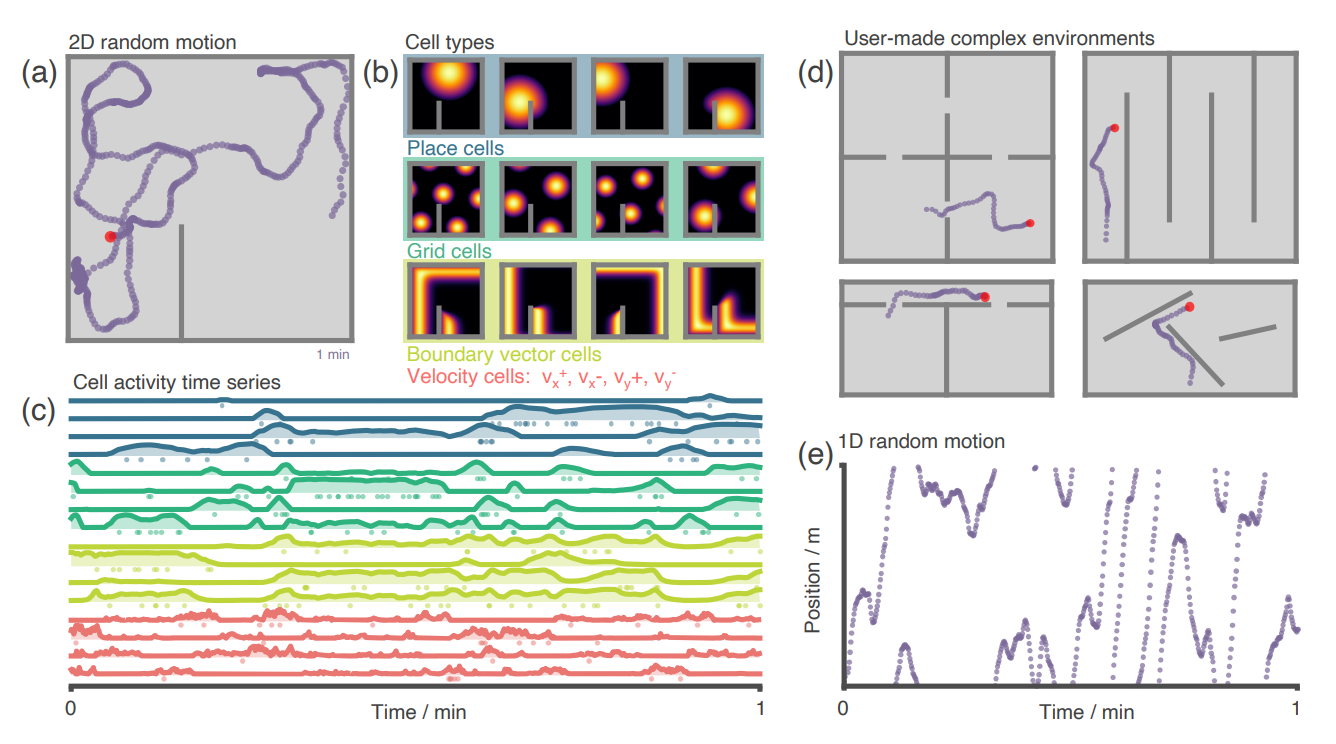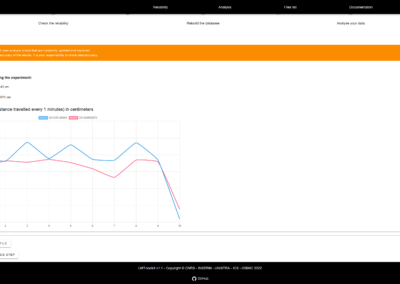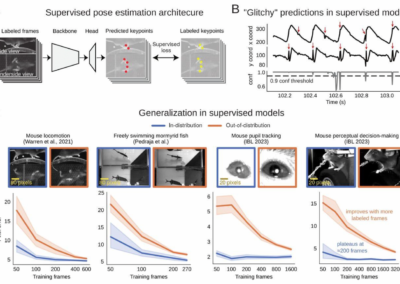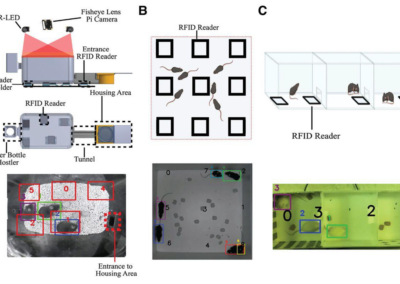RatInABox
Theoretical models of neural activity have led to major advances in how we understand the brain in simple and relatively complex behaviors. These models generally rely on synthetic generated data of brain activity and behaviors to be compared with real world experimental data. This process can be complicated, timely, and difficult to reproduce across studies, particularly for complicated behaviors such as spatial navigation. To address this, Tom George and colleagues developed and shared RatInABox, an open-source Python toolkit designed to model realistic rodent locomotion and generate synthetic electrophysiological data from spatially modulated cell types. This software provides a common framework for creating theoretical one and two dimensional environments and realistic motion models of rodent behavior in these environments. This package also produces theoretical neural data from an assortment of cell types within the hippocampal formation based on known populations, and can be expanded to generate custom cell types and multi-layer network models. The authors provide a side by side comparison of real-world and artificial data produced by RatInABox as proof of concept in their preprint on bioRxiv. The package is available via GitHub, where installation instructions, tutorials and extensive documentation are available.
This research tool was created by your colleagues. Please acknowledge the Principal Investigator, cite the article in which the tool was described, and include an RRID in the Materials and Methods of your future publications. RRID:SCR_023682

Access the design and code from GitHub!
Check out the repository on GitHub.
Read more about it!
Check out more about the development and validation of this device from the bioRxiv preprint!
Check out projects similar to this!






